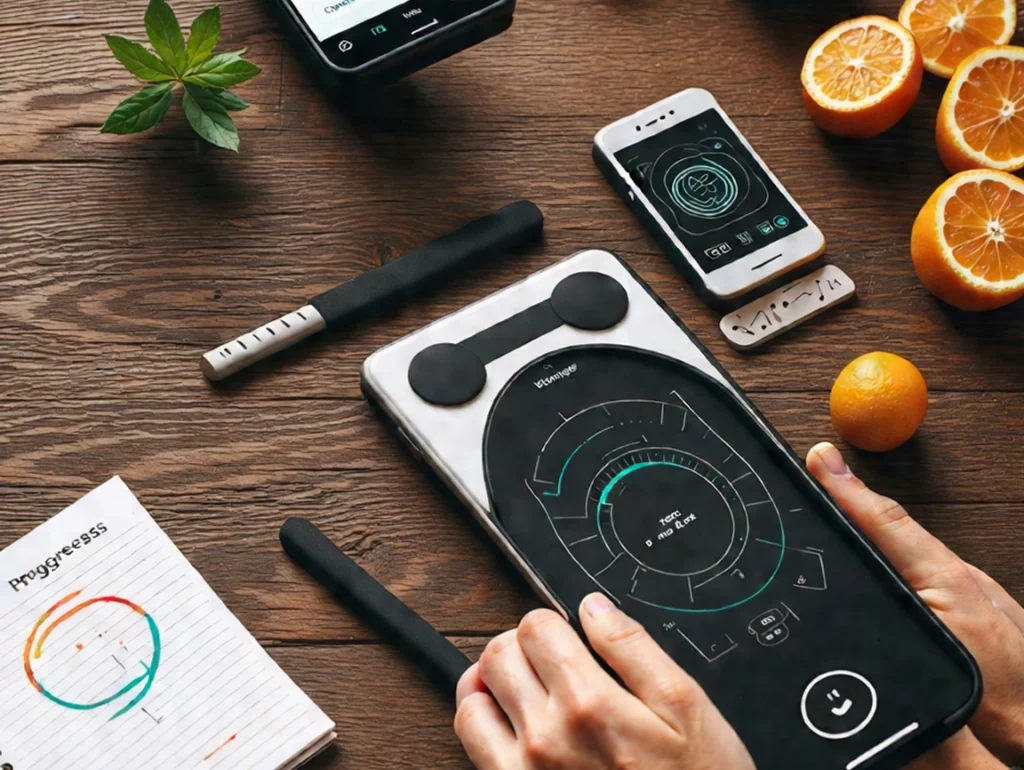Tracking your progress is one of the most effective ways to stay motivated and achieve your health and fitness goals. A well-structured progress tracking system helps you assess your performance, make necessary adjustments, and celebrate your wins. Without it, you’re flying blind—unsure if your workout routine or diet is truly delivering results.
So, how do you set up a progress tracking system that ensures success? Follow this guide to monitor your fitness journey efficiently.
Why Is a Progress Tracking System Important?
Tracking your progress does more than just measure success—it helps you:
✅ Stay motivated by seeing real results
✅ Identify what’s working and what’s not
✅ Make data-driven adjustments to your workout and diet
✅ Prevent plateaus and avoid fitness burnout
✅ Set realistic short-term and long-term goals
Without tracking, it’s easy to assume you’re making progress when you might be stuck in a cycle of inefficiency.
What Metrics Should You Track?
A successful progress tracking system measures multiple aspects of fitness, not just the number on the scale. Here are the key metrics to track:
1. Body Composition
📌 How to Measure: Use body fat scales, skinfold calipers, or DEXA scans.
📌 Why It Matters: Weight alone doesn’t show fat loss or muscle gain—body composition does.
2. Strength Progression
📌 How to Measure: Track the weight, reps, and sets for each exercise.
📌 Why It Matters: Strength gains indicate muscle growth and improved performance.
3. Endurance and Cardio Performance
📌 How to Measure: Record running times, cycling distances, or heart rate zones.
📌 Why It Matters: Shows improvements in cardiovascular health and stamina.
4. Body Measurements
📌 How to Measure: Use a measuring tape for the waist, hips, arms, and thighs.
📌 Why It Matters: Inches lost or gained reflect fat loss and muscle growth.
5. Daily Habits and Nutrition
📌 How to Measure: Use a food journal or tracking app (MyFitnessPal, Cronometer).
📌 Why It Matters: Proper diet ensures results from workouts and prevents overeating.
6. Energy Levels and Recovery
📌 How to Measure: Rate your energy daily on a scale of 1-10 and track sleep quality.
📌 Why It Matters: Overtraining or poor recovery can hinder progress.
What Tools Can You Use for Progress Tracking?
A good progress tracking system uses various tools to simplify data collection. Here are some of the best options:
📊 Apps & Software:
✅ MyFitnessPal – Tracks calories and macros
✅ Strong – Logs weightlifting progress
✅ Strava – Monitors cardio workouts
✅ Sleep Cycle – Analyzes sleep patterns
📈 Wearable Tech:
✅ Fitbit – Tracks steps, heart rate, and sleep
✅ Apple Watch – Monitors workouts and overall activity
✅ Whoop Strap – Measures strain, recovery, and sleep quality
📑 Manual Tracking:
✅ Notebook or Spreadsheet – Simple but effective for tracking workouts and diet
✅ Progress Photos – Take front, side, and back photos weekly
A combination of these tools ensures the most accurate and comprehensive progress tracking.
How Often Should You Track Progress?
Tracking too often can be discouraging due to natural fluctuations. Instead, follow these guidelines:
📌 Daily: Log workouts, nutrition, and energy levels
📌 Weekly: Weigh yourself and take body measurements
📌 Bi-Weekly: Take progress photos
📌 Monthly: Perform body composition tests and assess long-term trends
The key is consistency. Stick to the same schedule and measurement methods for the best insights.
How to Adjust Your Plan Based on Progress?
Tracking data is useless unless you act on it. Use your progress tracking system to make data-driven decisions:
🟢 If You’re Progressing Well:
✅ Continue your current routine
✅ Celebrate small wins to stay motivated
✅ Set new performance goals
🔴 If Progress Stalls:
✅ Adjust your diet (increase protein, adjust calorie intake)
✅ Change your workout intensity or volume
✅ Prioritize recovery and sleep
🚨 If You’re Losing Strength or Energy:
✅ Check for signs of overtraining
✅ Ensure you’re eating enough for muscle recovery
✅ Reduce workout frequency or intensity temporarily
Regular assessments help fine-tune your approach for consistent improvements.
Key Takeaways: How to Get the Most from Progress Tracking
📍 A progress tracking system is essential for measuring success and making adjustments.
📍 Track multiple metrics, including body composition, strength, endurance, and nutrition.
📍 Use apps, wearables, and manual tracking for accurate results.
📍 Stay consistent with tracking frequency (daily, weekly, monthly).
📍 Analyze your data to optimize your workout and diet for continuous progress.
With the right progress tracking system, you’ll know exactly what’s working, what needs improvement, and how to stay on the path to success. Start tracking today and take control of your fitness journey!
Read Next…
- How to Set Up a Progress Tracking System for the Best Health and Fitness Results
- Weekly Workout Plan: What Do Experts Suggest for Beginners?
- Best HIIT Workout for Maximum Results
- Stretching 101: How to Warm Up Before Workouts
- The Ultimate Guide to HIIT Workouts: Tips, Benefits, and How to Get Started




